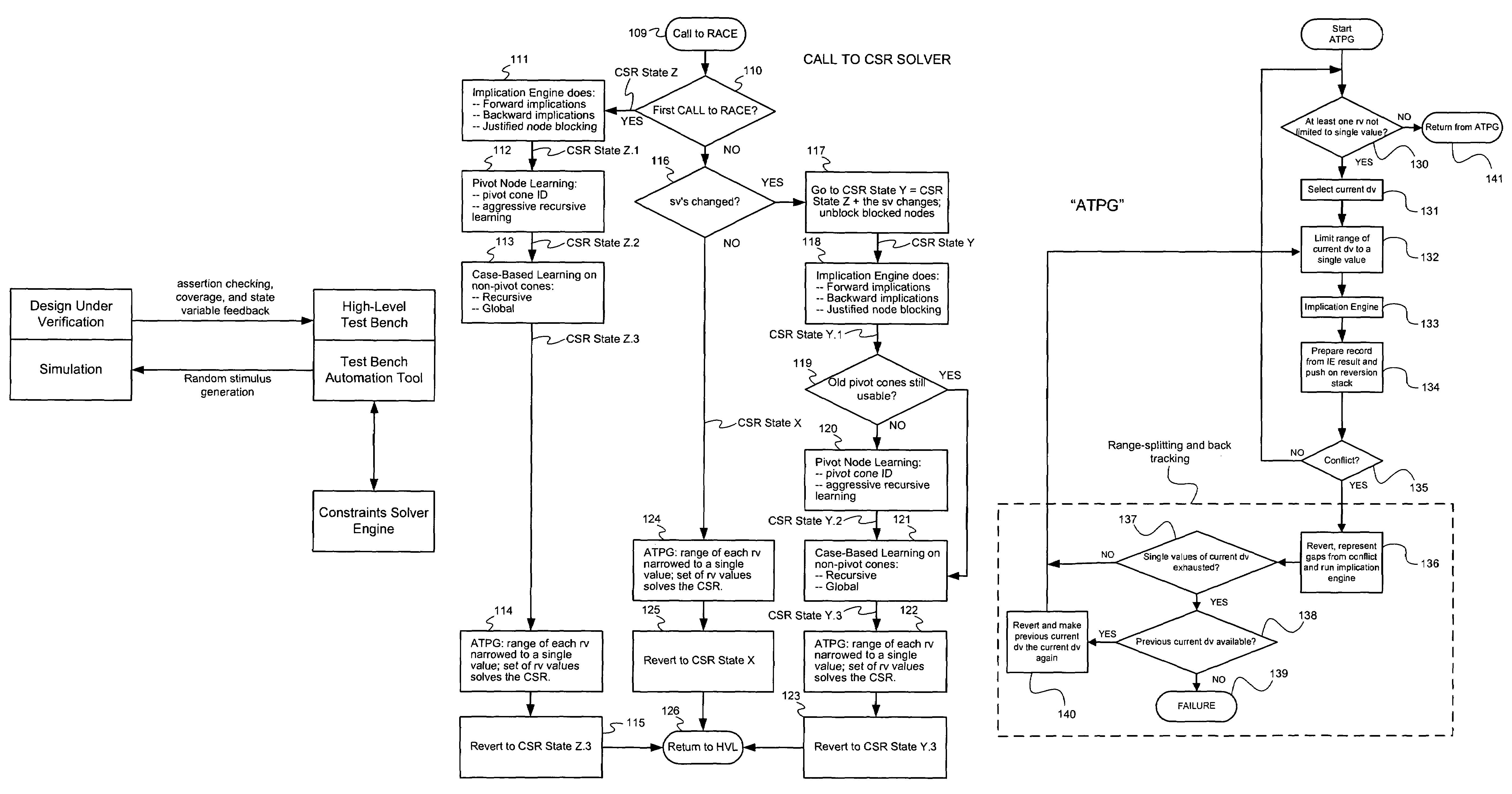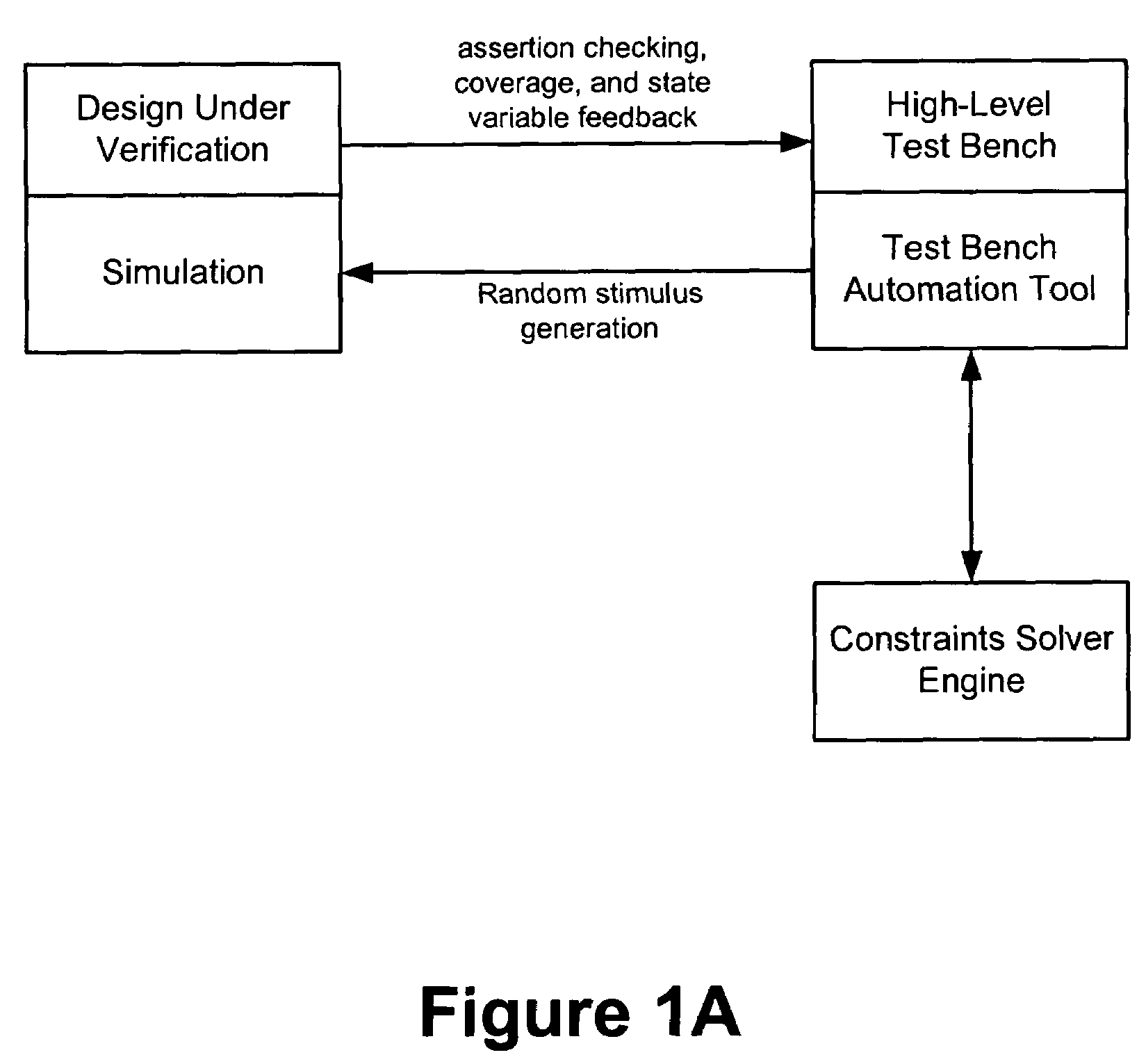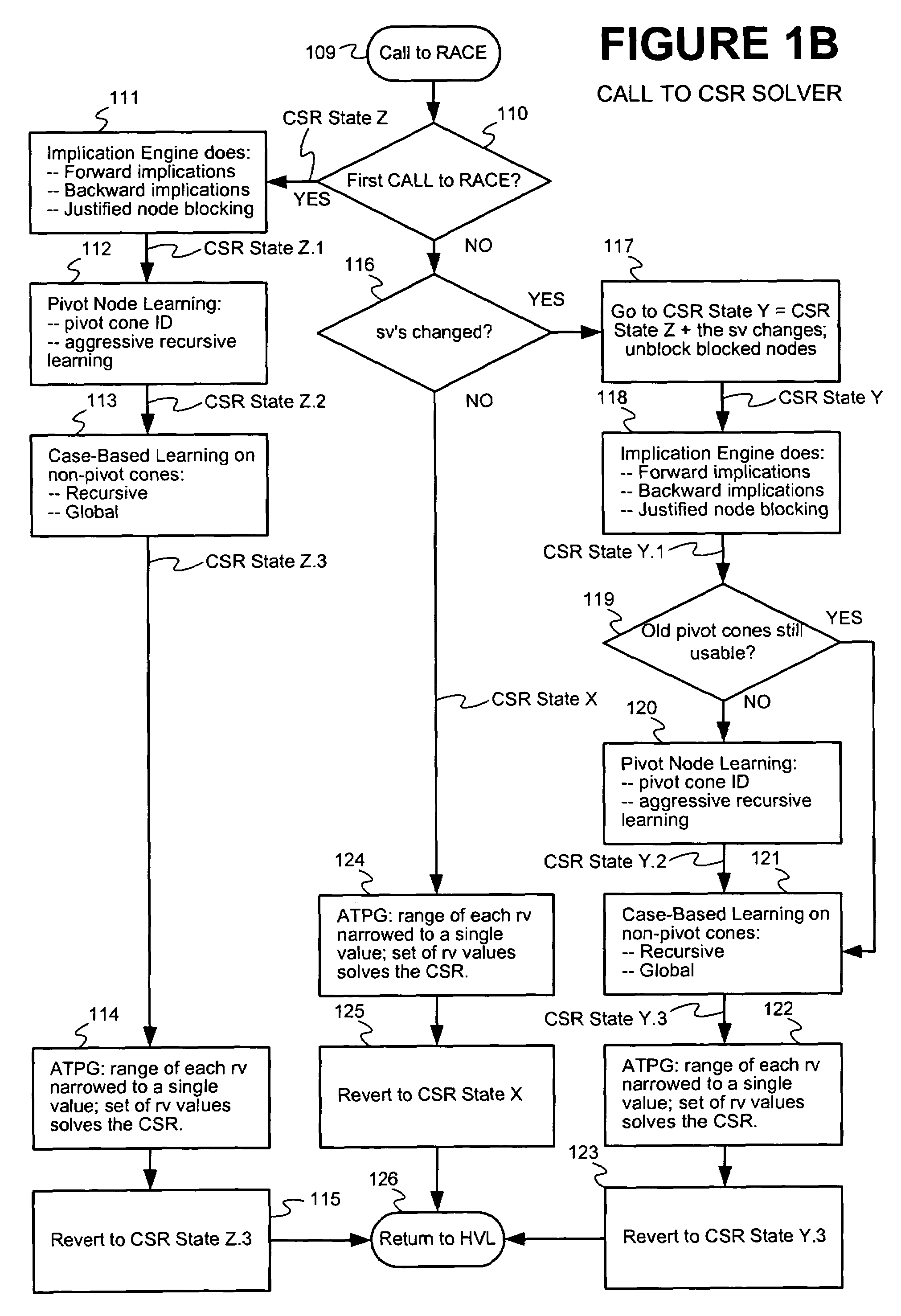Method and apparatus for improving efficiency of constraint solving
a technology of constraint and efficiency, applied in the field of solving sets of constraints, can solve problems such as complex assignment of variables to their variables, and achieve the effect of increasing efficiency (or computing speed, less time)
- Summary
- Abstract
- Description
- Claims
- Application Information
AI Technical Summary
Benefits of technology
Problems solved by technology
Method used
Image
Examples
Embodiment Construction
[0115]Please refer to the Glossary of Selected Terms, included at the end of this Detailed Description, for the definition of certain selected terms used below.
[0116]Reference will now be made in detail to preferred embodiments of the invention, examples of which are illustrated in the accompanying drawings. Wherever possible, the same reference numbers will be used throughout the drawings to refer to the same or like parts.
[0117]
Table of Contents to Detailed Description1. Constraints Solving1.1. Overview1.2. ATPG1.3. Implication Engine1.3.1. Overview1.3.1.1. Forward Implication1.3.1.2. Backward Implication1.3.1.3. Justified Node Blocking1.3.2. Pseudo-Code1.3.2.1. Overview1.3.2.1.1. ImplyValuesInCircuitFe1.3.2.1.2. ForwardImply1.3.2.1.3. BackwardImply1.3.2.1.4. Levelization1.3.2.1.5. Operator-Specific Implication Procedures1.3.2.2. Justified Node Blocking1.3.2.3. Example1.4. Pivot Node Learning1.4.1. Overview1.4.1.1. Pivot Node and Pivot Cone1.4.1.2. Aggressive Recursive Learning1.4...
PUM
 Login to View More
Login to View More Abstract
Description
Claims
Application Information
 Login to View More
Login to View More - R&D
- Intellectual Property
- Life Sciences
- Materials
- Tech Scout
- Unparalleled Data Quality
- Higher Quality Content
- 60% Fewer Hallucinations
Browse by: Latest US Patents, China's latest patents, Technical Efficacy Thesaurus, Application Domain, Technology Topic, Popular Technical Reports.
© 2025 PatSnap. All rights reserved.Legal|Privacy policy|Modern Slavery Act Transparency Statement|Sitemap|About US| Contact US: help@patsnap.com



